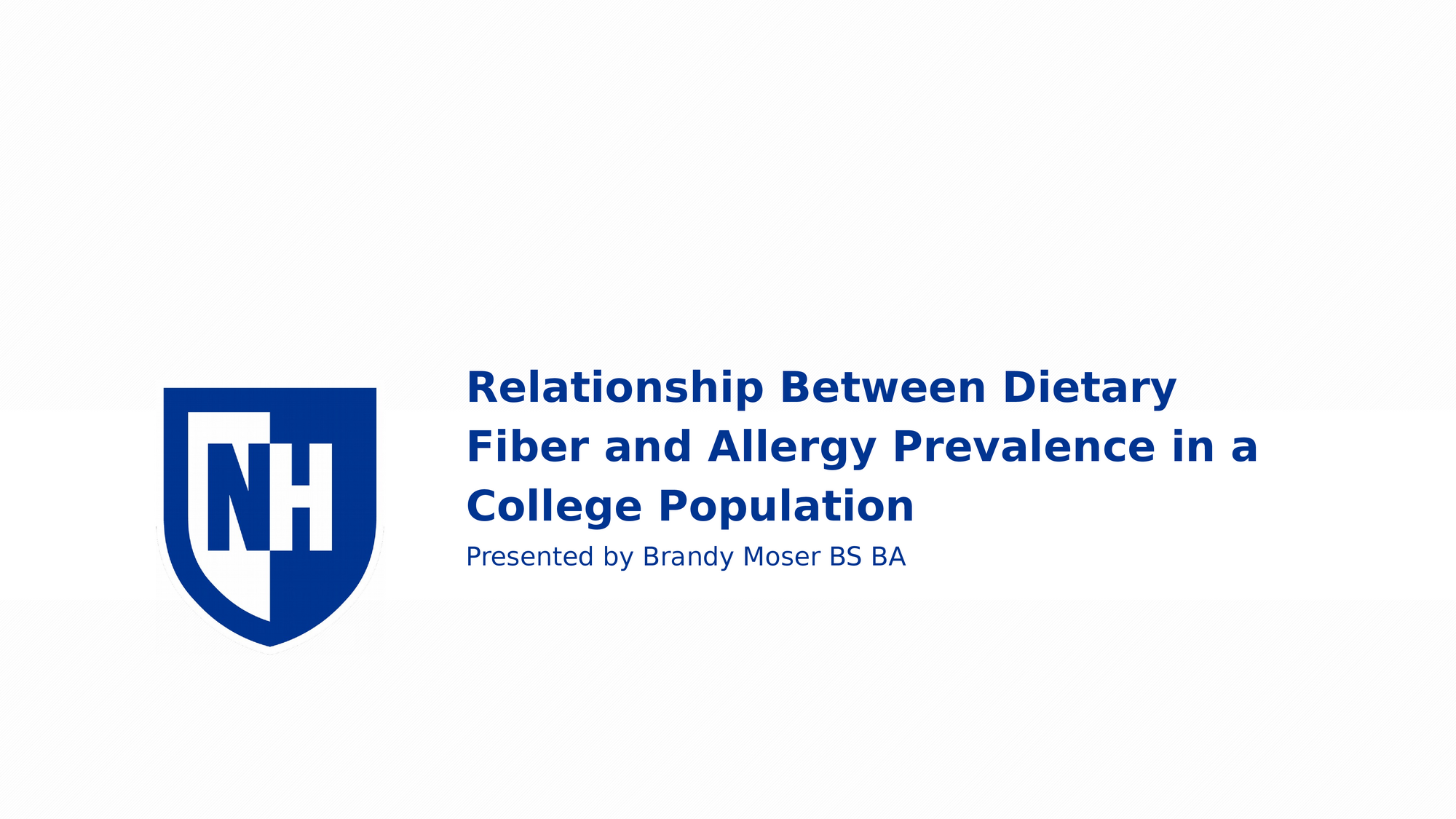Title:
Relationship Between Dietary Fiber and Allergy Prevalence in a College Population
Slideshow Presentation
Best viewed by downloading
Preview Converted Images may contain errors

Poster
Preview Converted Images may contain errors
Abstract
Objective: To characterize the relationship between dietary fiber intake and the prevalence of the allergic diseases, seasonal allergies and asthma, in a college student population.
Methods: Data were collected from 2012-2021 through the College Health and Nutrition Assessment Survey, an ongoing cross-sectional study at a midsized, public New England university. Students (18-24 years; n=4135; 67% female) completed a comprehensive, online demographic and health information survey, a 3-day food record, and an analysis of their average nutrient intake via an online program (Diet and Wellness Plus). After stratifying by sex, students’ fiber intake (g/day) was grouped into quartiles; differences in allergy and asthma prevalence across quartiles were evaluated via chi-square tests. Logistic regression was used to examine differences in allergy and asthma prevalence between low fiber intake and those with higher intakes after controlling for covariates BMI, smoking status, and alcohol consumption.
Results: Of the final sample, 37.6% and 19.2% reported a seasonal allergy and asthma, respectively, after exclusion of participants with missing data (4135 of 5093). Food records indicate only 18.2% of females and 12.2% of males are meeting recommended intakes of dietary fiber. Quartile fiber consumption was associated with seasonal allergy prevalence in males (X2=10.657, df=3, p=0.014) and females (X2=15.526, df=3, p=0.001). Females consuming the lowest quartile of fiber intake (< 13.62g/day) experience 1.39 times the odds of seasonal allergies (p<0.001, 95% CI 1.164-1.651) when controlling for the covariates of BMI, smoking status, and alcohol use. No significant differences in asthma prevalence were identified between fiber intake quartiles.
Conclusions: Consistent with previously identified associations, our findings suggest fiber intake is related to seasonal allergies but not asthma, with a stronger relationship among females. This study further emphasizes the need to investigate potential dietary risk factors for allergic diseases and to inform institutions on key dietary priorities for college student health.
Authors
| First Name |
Last Name |
|
Jesse
|
Stabile Morrell
|
|
Brandy
|
Moser
|
Leave a comment
Submission Details
Conference GRC
Event Graduate Research Conference
Department Nutritional Sciences (GRC)
Group Oral Presentation & Poster Presentation
Added April 9, 2022, 3:06 p.m.
Updated April 12, 2022, 8:48 a.m.
See More Department Presentations Here